
The holidays often bring a change in your routine that can cause stress and pain in your neck. Common to the mind/body world is the saying “it’s all connected.” This is never more true than with the relationship of your neck and shoulders to your posture.
Most people have overly helpful
upper traps – yet other important muscles (like
your lats) remain underused. Let’s wake up those underused muscles! These
exercises may look simple, but if you sit, type, text, drive, or read a lot,
this work is important for you, and you’ll feel the results fairly quickly.
Exercise 1: Notice What Your Arms Are Doing
The pulley system that supports
your cervical and thoracic spine (neck and mid-back) can be assessed by taking
a look at your arms.
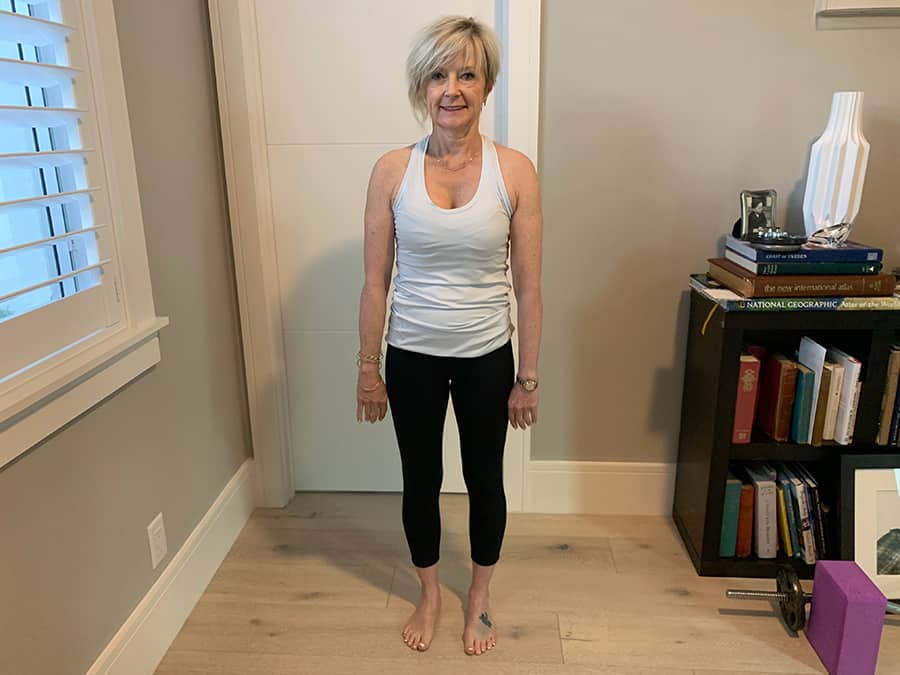
Stand in front of a mirror with your arms relaxed by your sides.
What most people see is that both arms hang hand down, landing a little bit in
front of their body. Often, the backs of their wrists are facing the mirror.
Ideally, in this natural, relaxed
state, you’d see your thumbs facing forward. However, what most of us see is
the backs of our hands. What you see is an important indicator of how things
are working at your neck and shoulders.
This posture means that your arm
bones are not in a place where your upper arms can even get toned without
creating neck tension.
Let’s fix that!
Exercise 2: Squeeze It in
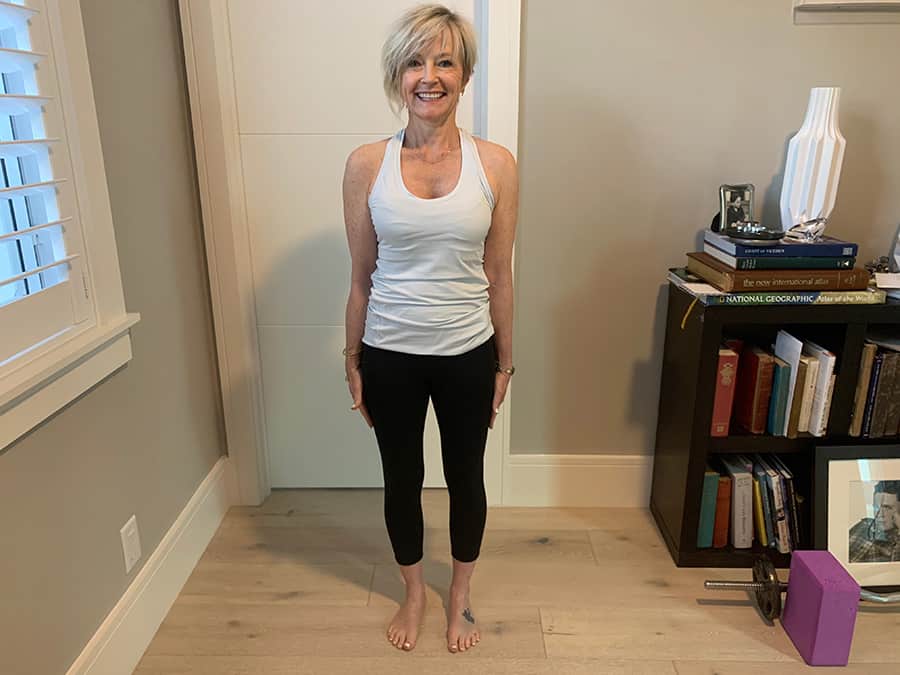
Standing in front of the mirror,
bring your hands alongside your body as if you were trying to touch racing
stripes on the side of athletic pant legs. Press the palms of your hands into
the sides of your thighs.
Once your hands are flat on the
side of your leg, try working all the muscles in your arms, shoulders and mid
back toget as much of your entire arm to touch your body as you can.
Now you are working all the little
muscles at the shoulder, as well as the big latissimus dorsi! Hold for about 10
seconds. Do this 5 times.
Exercise 3: Independence for Your Shoulders
Sometimes our arms and shoulders
move as one; other times they move independently of one another. This
independence is vitally important for the health and mobility of your neck,
upper back and shoulder area.
The rhomboid push-up is a great
way to create more movement in your shoulder blades so that your mid back and
neck don’t get tense and knotted.
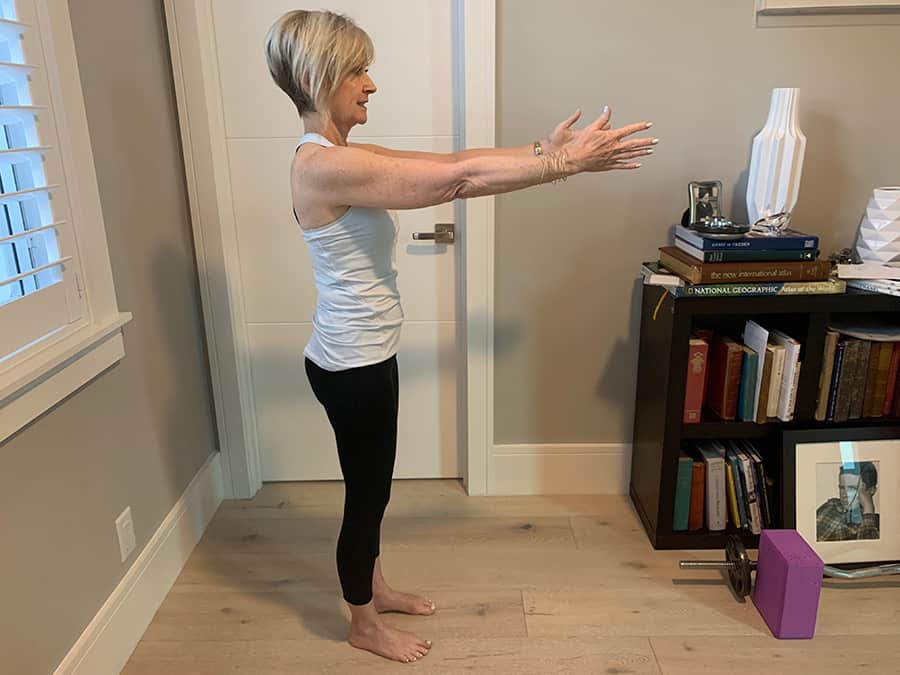
Stand with your feet solidly
planted beneath your hips and reach your arms out in front of you. Shoulder
height is great, but if you feel neck tension at shoulder height, drop your
arms a little lower.
Now pretend you’re reaching for a
yummy dessert about three inches in front of you. With straight arms and
outstretched fingers, invite your arms to reach for the dessert by allowing
your shoulder blades to get wide on your back and wrap to the front.
Now pull that dessert back towards
you without bending your elbows. The dessert gets closer to you as your
shoulder blades come closer together.
Invite the bottoms of your
shoulder blades to get closer to each other. If you concentrate on the tops of
your shoulder blades, your neck may decide to join the party – and we don’t want that.
Exercise 4: The No-Grip Hold
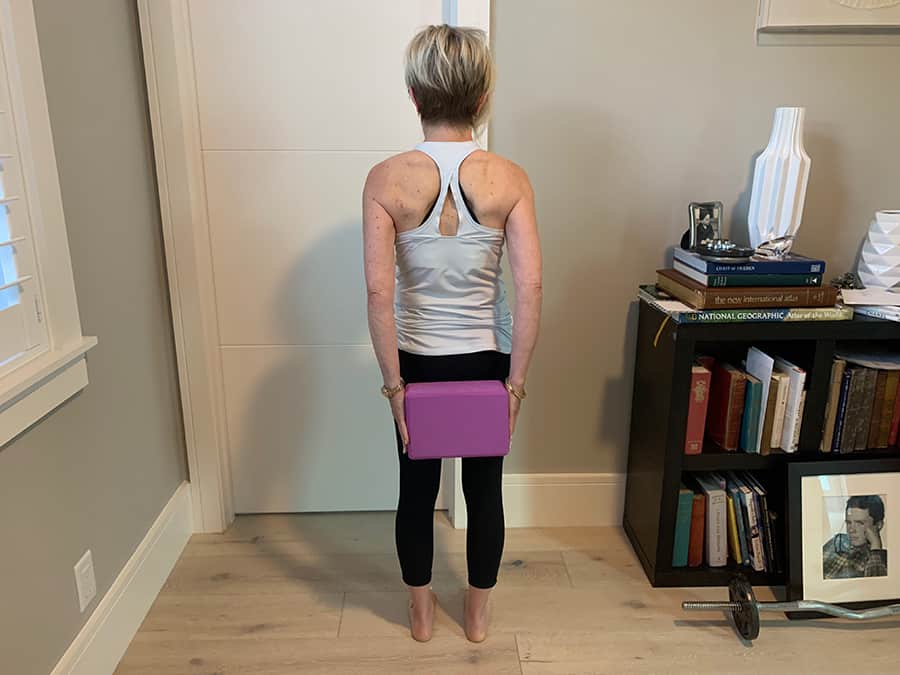
I know that this exercise looks pretty darn easy. But
it is VERY difficult. Many perform it with the elbows out
to the side, rather than with straight arms. Straighter arms are what we’d like
to see, to strengthen the correct muscles.
For this exercise, you’ll need a
yoga block or a book about 8–10
inches long. The longer the object is, the easier the no-grip hold will be.
All you need to do is hold the block behind you by pressing your palms into it. Hold with no gripping for 10 to 20 seconds, 3 times.
If your elbows come out to the
side, it’s those darn lats that we need to work with again. The latissimus
dorsi is the largest muscle in our upper body, but our shoulders have gotten so
tight that our lats no longer generate much force.
As a bonus, think of how your
metabolism might rev up if it needs to power this big muscle more often. This
will help you muster the strength for one more hold!
Exercise 5: Simple Wrist Puzzle
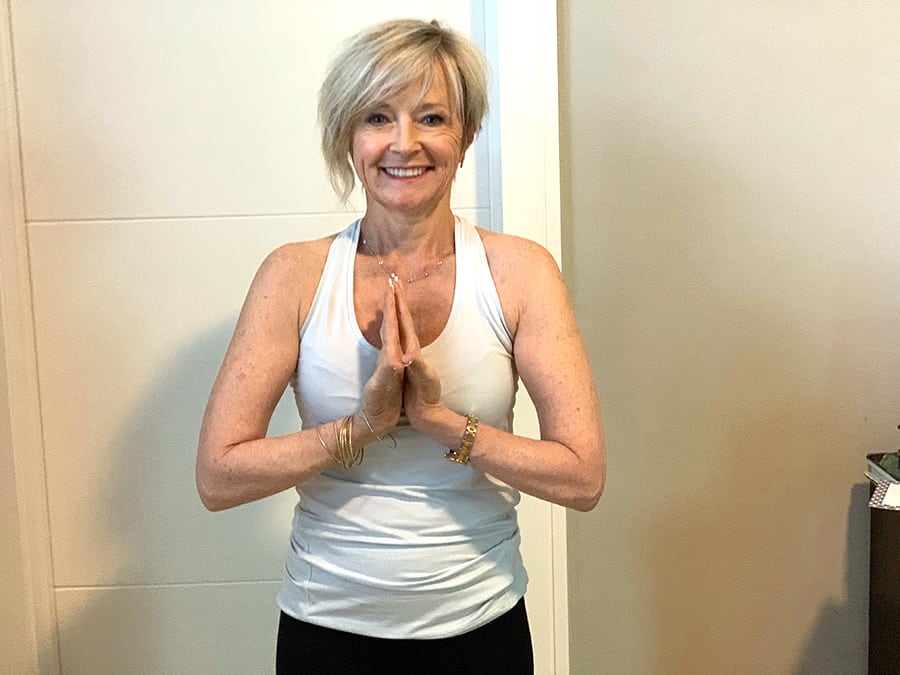
What is a wrist puzzle, you ask?
Getting the backs of your hands to touch in a reverse prayer shape in front of
your chest.
Although the goal is for the
entire backs of the hands to touch, including your thumbs, it takes time to
undo the tension and get to this point. Play around with how close to your body
and how far up or down you need your hands to be to make this work.
Do not worry about how much or how
little is touching right now. The practice alone is the work. Remember, we are
looking for progress, not perfection.
Just Do It, But Don’t Overdo It!
There are no hard and fast rules
about how often to work with these exercises. If you find them challenging,
then you need them! And if you are someone who has an attitude of “a little is
good, a lot is better,” I urge you to please not overdo it. Change is slow.
After 60, change is slower.
But it’s never too late. I have
clients in their 80s who have reduced their neck tension and improved their
posture as well. It takes patience, and sometimes six to nine months for real
change.
Then one day, you’ll be surprised
to have a friend or colleague notice that you walk with more energy, or you
look brighter and lighter as you get up from your chair.
They may not realize that your
head is no longer hanging forward and your neck isn’t in pain, but they will
know something is different and that it looks and feels awesome on you!
Further read, STIFF NECK AND SHOULDERS? MAKE THEM STRONG WITH THESE 5 EASY TO FOLLOW EXERCISES.
Let’s Have a Conversation:
How easy do these exercises look at first
glance? Which
ones did you find most challenging? Would you like to see some stretches to set
you up for these exercises? Please share your thoughts below.





